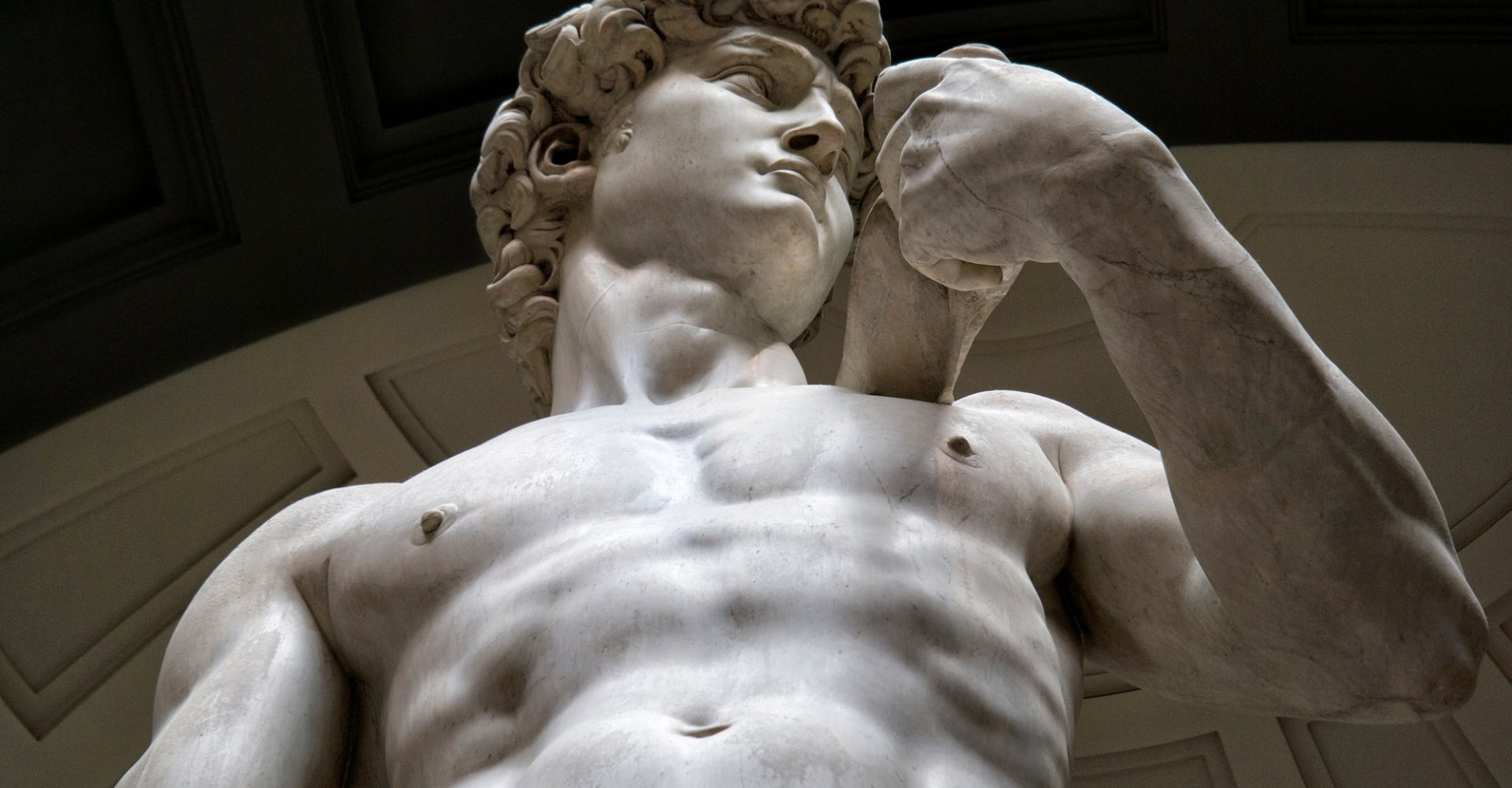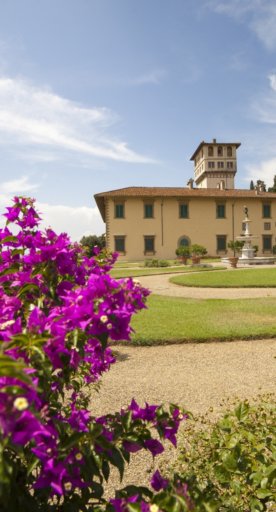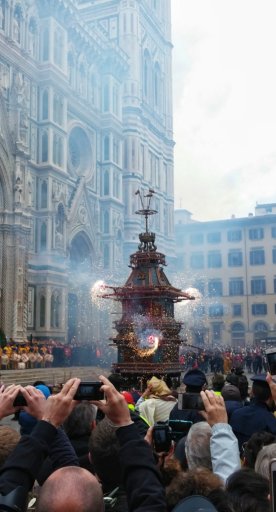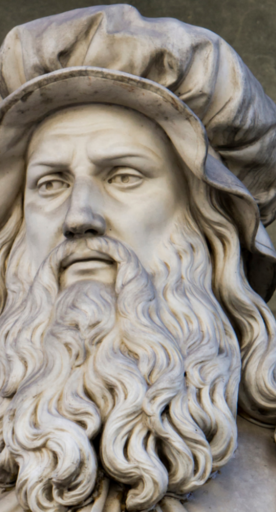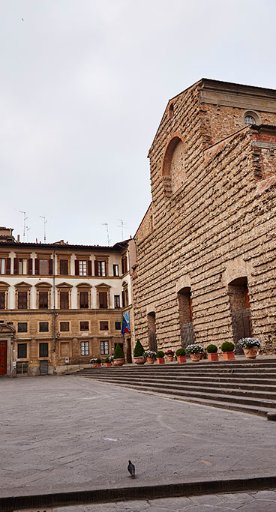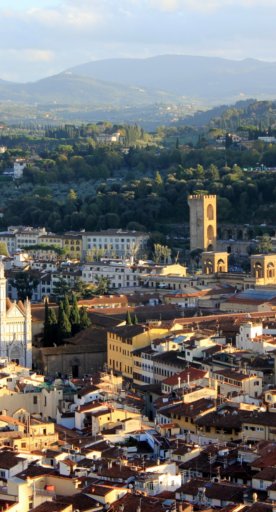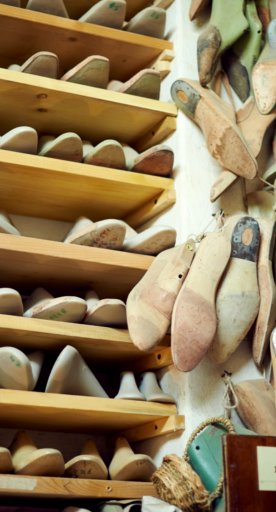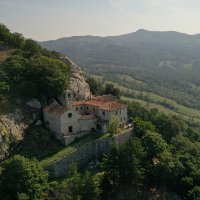Michelangelo's David: 7 facts you might not know
Test your knowledge of this iconic masterpiece
The David, housed in Florence's Accademia Gallery, is one of the most famous works of art, period.
People who come to Florence, even those who don't know what else to see, will almost always express a desire to see the original David (the one outside Palazzo Vecchio is, of course, a marble copy).
Of course, we all (or almost!) know that this work is a masterpiece by Michelangelo, that it was begun in 1501, that it's sculpted in marble and that it represents the biblical figure of David, who killed the giant Goliath with a stone flung from his slingshot.
But here are some other interesting facts that you might ignore.
-
1.The marble was... "used"!
-
2.A tumultuous life
-
3.He is taller!
-
4."Manu fortis"
-
5.Location is everything...
-
6.Change of address
-
7.Discrete copies
The marble was... "used"!
Two sculptors, Agostino di Duccio and, later, Antonio Rossellino, worked on the same block of Carrara marble that later gave life to the David. Both abandoned it, due to disagreements with the clients, little experience in the processing of statues of considerable size or because the block was too difficult to work with.
In 1501 the marble - defined as "male abbozatum et sculptum" - arrived in the hands of a twenty-five year old Michelangelo who, despite these difficult premises, was not discouraged. Within three years, the David was finished.
A tumultuous life

Over time the statue has undergone numerous damages and consequent repairs.
For example, in 1527, during a revolt against the Medici, a group of republicans, barricaded in the Palazzo Vecchio, threw stones, tiles and chairs from the windows: the left arm of the David was broken in three pieces and the sling was chipped.
Giorgio Vasari was responsible for the collection and conservation of the fragments, subsequently used in the restoration, upon the return of the Grand Duke Cosimo I.
He is taller!
If at home you have a slightly old guide book, you might find that the statue is 4 meters and 18 cm height, base included.
But measurements made in 2000 with new technologies have updated this number, raising the height of the David by over one meter and bringing it to 5 meters and 17 cm - 16 feet and 11 inches.
"Manu fortis"

His right hand is disproportionately large compared to the body.
Why? Because, in the Middle Ages, David was commonly said to be of "manu fortis" - strong of hand.
Location is everything...
Originally intended to be placed high up on the facade of the Cathedral of Florence, the beauty earned the David a more prominent and less hidden place.
A commission of illustrious artist (Leonardo da Vinci, Sandro Botticelli, Filippino Lippi and Andrea della Robbia, among others) and leading citizens was formed to decide the ideal location.
The placement in front of the main entrance to the Palazzo Vecchio was favoured by members of the new Republican government, who transformed the David into a political statement, an image of strong government and a warning.
The transport from the construction site took 40 men, 4 days and a night surveillance to prevent some moralist from damaging it, due to the nudity of the figure. On May 18, 1504, the David arrived in Piazza della Signoria, displacing from its location the Judith and Holofernes statue by Donatello, and immediately becoming the symbol of the Florentine republic.
Change of address
The decision to move David to the Accademia Gallery, for preservation reasons, was taken in 1872.
The transportation of the colossal work took place in a cart laid on train tracks, from Piazza della Signoria to the museum. It took three days.
Discrete copies
There are many copies of the David.
One of them was given to Queen Victoria, who had it shipped directly to the Victoria and Albert Museum in London, in 1857. Queen Victoria then visited the museum and was shocked by David’s nudity. A special fig leaf was then cast by the London firm D. Brucciani Co., ready to be hung from two hooks strategically placed in front of David's genitals, in case of visiting dignitaries.
